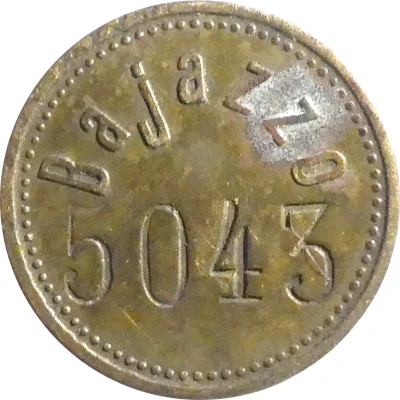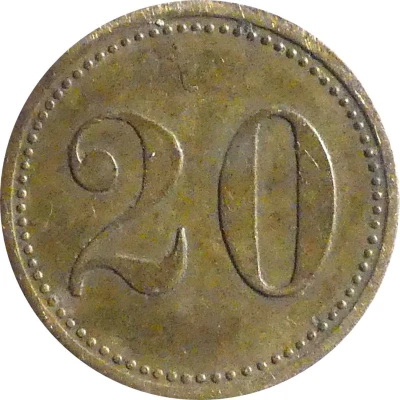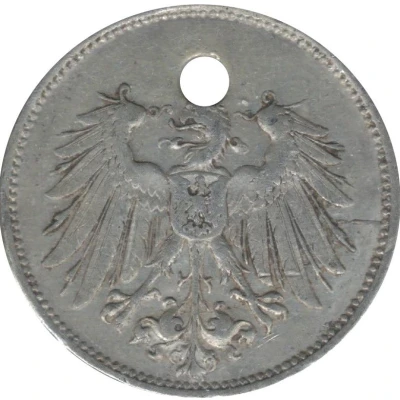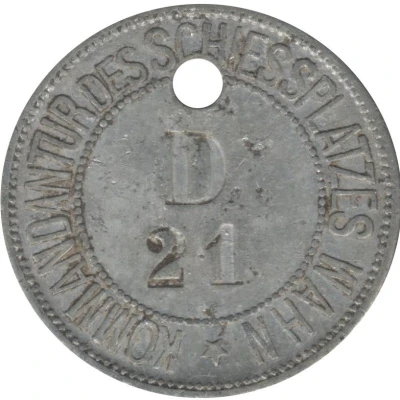


Jeton Bajazzo (20) ND
| Nickel brass | 1.9 g | 17.20 mm |
| Location | Germany (1871-1948) |
|---|---|
| Type | Amusement tokens › Game machine and arcade tokens |
| Composition | Nickel brass |
| Weight | 1.9 g |
| Diameter | 17.20 mm |
| Thickness | 1.15 mm |
| Shape | Round |
| Orientation | Medal alignment ↑↑ |
| Demonetized | Yes |
| Updated | 2024-11-14 |
| Numista | N#403378 |
|---|---|
| Rarity index | 90% |
Reverse
Face value in the field surrounded by a grenetis
Script: Latin
Lettering: 20
Edge
Plain
Comment
Token for Bajazzo clown machines.
Bajazzo wall games, from the German company Jentzsch & Meerz of Leipzig, were built in many variants from 1906 to 1950. The tokens used were made of copper, brass-nickel or brass, and their face values ranged from 10 to 30. Some types were perforated or had a square or star-shaped perforation. Diameters did not vary.
Further info from https://www.coincommunity.com/forum/topic.asp?topic_id=99997 (translation):
...this token was indeed designed for use with German-made machines called "Bajazzo" but also for the English market under the name "Clown", from around 1912. The machine is played with a ball which, if caught, releases such a token, with different amounts indicated on the reverse. Stamped serial numbers corresponded to each machine, so that the store in which the machine was used knew that the tokens (exchanged for money) had been won on their machine. Very few Bajazzo or Clown machines have survived in Australia, but a small number would have been exploited here. It was a very popular machine in Europe and particularly in England where a large number of them were used and where many survive. I have around 100 Clown and Bajazzo chips, at least 60 serial numbers ranging from 666 to 8001.
And to see the machine: http: //www.jukebox.lu/bajazzoen.html



